![]()
The flow of packet data transmitted by typical worms
The following shows the typical five worms visualized by the tool.
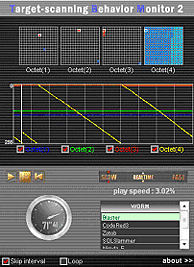
Blaster transmits a packet that attacks the vulnerability of Windows (MS03-026) to the TCP port #135*4 of random IP addresses.
Blaster searches IP addresses with a fixed 1st ~ 3rd octet and monotonically increases 4th octet. This will be because adjacent nodes in the same network segment as that of the infected node can be found effectively.
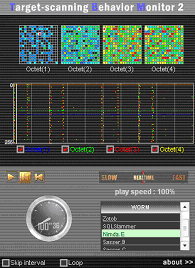
Nimda attacks vulnerability of the web server (IIS: Internet Information Service) (MS00-078) using TCP port #80 and transfers the body of the worm to the target node through TCP port #137 - #139 and #445.
In case of the Nimda worm, a bias is seen in the range of the first octet. In the third and fourth octets meanwhile, the address is selected in a more random manner than the other octets.
Zotob transmits packets that attack the vulnerability in Plug and Play of Windows (MS05-039) using TCP port #445.
The Zotob worm makes the search, expanding the range of the fourth octet of the destination IP address while fixing all the other octets. It is also evident that this worm changes the search patterns of the fourth octet over time.
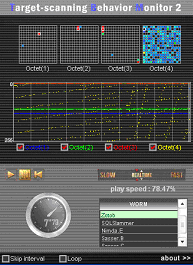
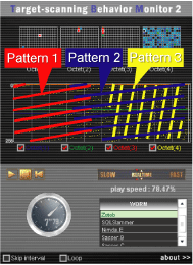
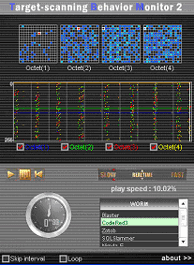
CodeRed transmits a packet that attacks the vulnerability of web server (IIS: Internet Information Service) (MS01-033) using TCP port #80.
While the CodeRed worm basically fixes the first and second octets of the destination IP address, it sometimes randomizes the range for these two octets in its search. Also, in this worm's case, there is a bias in the selected area of the first octet, as the Nimda worm.
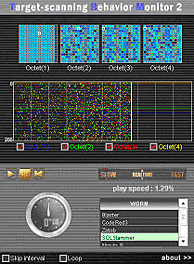
SQLSlammer targets the vulnerability of SQL Server 2000 (MS02-039) that transmits harmful packets to UDP port #1434.
The SQLSlammer worm conducts the search, expanding the range of all the octets of the destination IP address, whereby the worm may search a wider area without limiting the target networks. Also, this worm transmits far more packets than other worms within a specific period. Therefore, it is recommended to set the playing speed to slow when you use the visualization tool provided on this website.